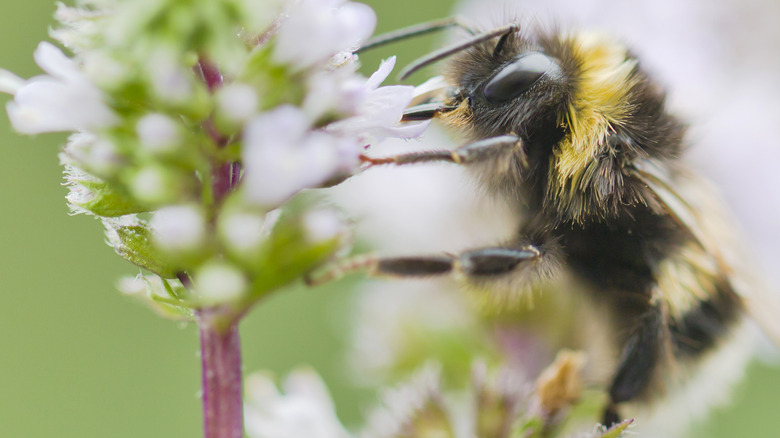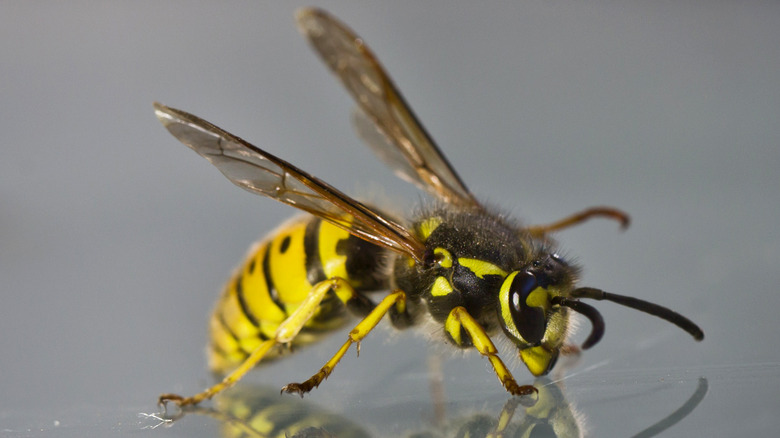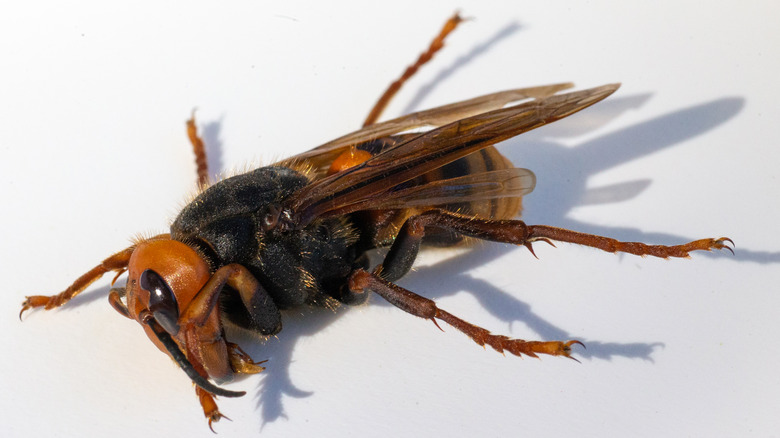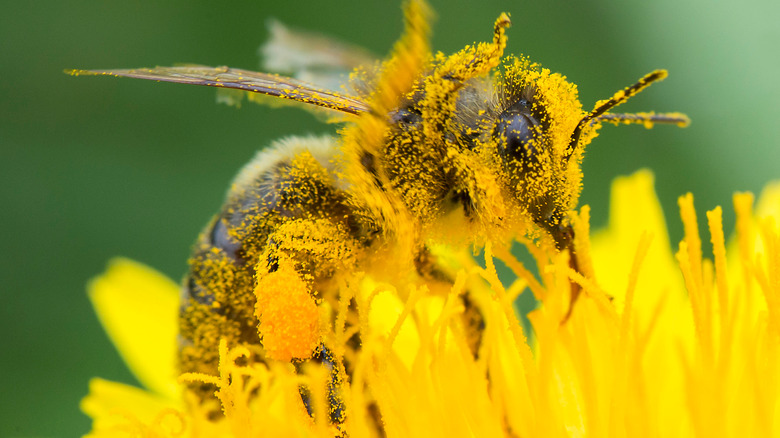What's The Difference Between Bees, Hornets, And Wasps?
Bees, hornets, and wasps are often causes for concern around the globe. From stings to allergies, most people try not to come into close contact with any of these insects. Many confuse those in the wasp family (which includes hornets) with bees (via Student Conservation Association). However, these three bugs should not be lumped into the same category used when describing behavior or physical attributions. While all three do sting, they are distinct.
Mental Floss breaks down the differences in these stingers and physical appearances. Bees can only sting a human once, whereas hornets and wasps can both sting multiple times and are known to be aggressive. When bees sting humans, the stinger sticks into the person's skin and the bee dies. This does not occur when a bee stings another bee, however. All bees have stingers, but only female hornets and wasps have stingers. Bees are fuzzy but hornets and wasps are smooth.
Hornets and wasps are related
Hornets are a subset of the Vespidae wasp family and are larger around the middle than wasps (via Mental Floss). Hornets are larger than wasps by around half of an inch overall. Hornets do not vary in color as much as wasps. Hornets are only either black and white or brown and red (via Orkin) while wasps can be orange, burgundy, reddish brown, or black and yellow (via SCA).
Though bees seem like the odd one out in physical appearance – given their fuzzy exterior and the fact that hornets and wasps are more closely related – some types of bees, such as the nomada bee, have slender bodies that resemble that of a wasp (via BuzzAboutBees).
All members of the wasp family are carnivorous, unlike bees. They eat insects and use insect proteins to feed their offspring. Bees feed on nectar and pollen from plants (via Stomp Pest Control). Therefore, bees are vegetarian.
Murder Hornets
Infamously, hornets have recently made headlines with regard to so-called murder hornets. The New York Times explains that murder hornets are actually Asian giant hornets, which are bigger than other hornets in the United States. The reason for fears surrounding this type of hornet is that if they become an established species in the United States, they could harm bee populations. The hornets kill bees and feed them to their young.
Aside from bee deaths, these hornets kill around 50 people per year in Japan. Just one sting can be fatal. Their arrival in the United States first began in the northeast part of the country in 2019 (via Smithsonian Magazine). Work to eradicate nests of Asian giant hornets were successful throughout 2020 and 2021, but it is unclear whether or not they are completely gone from the northeast. The Washington State Department of Agriculture is encouraged by the outpouring of public interest in helping to report sightings of the hornets in the hopes that they will be fully eradicated (via Wane).
Bees, hornets, and wasps all pollinate
Perhaps the most important differences between bees, hornets, and wasps are their roles in their ecosystem. Pollination is the transfer of pollen from plant to plant, which leads to fertilization that allows plants to produce fruit and seeds (via Pollinator). According to Brightly, bees pollinate 80% of the planet's fruits, vegetables, and plants. Therefore, the recent addition of the bee onto the list of endangered species is alarming. Fewer bees means less produce in grocery stores. Avoiding pesticides and buying from local bee farms are ways to help bee populations.
Hornets and wasps pollinate as well, but only by accident. Outside of this positive attribute, those in the wasp family also help control the populations of other insects, as insects are their main food source. This means that wasps help food crops as well as bees, just not in the same way. Bees pollinate other plants, while wasps cut down on insects that could destroy crops. Though bees do affect food sources for humans, hornets and wasps play valuable roles in their ecosystems as well (via Popular Science).



